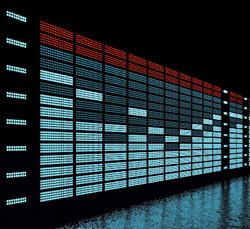
Myth #3: Additive EQ is less accurate
This is something I hear a lot, and quite honestly I’m not even sure what it really means.
I believe this myth stems from the idea that it’s better to “cut narrow and boost wide.” In reality you should boost or cut as narrow or wide as needed.
I think it’s easier to over extend the width of an EQ boost because that means more stuff is getting louder. And louder has that instant gratification effect of sounding better. Again, this is a result of application and not inherent to how an EQ works.
Myth #4: Subtractive EQ Doesn’t Require Active Gain
This one is based on the idea that because you are “taking something away” you don’t need to add power to do it. This is really only true in the simplest filter setups.
While it’s true that a simple resistor-capacitor circuit doesn’t need any power, most more complex circuits do.
That’s not to say there aren’t complex subtractive circuits that work completely passively — there are a lot. But many EQs, no matter what you are doing, are drawing on active power. It completely depends on the EQ itself.
Lastly, digital EQs don’t use power. There’s no such thing as an “active” digital EQ, outside of plugins that emulate hardware.
Myth #5: Subtractive EQ Frees Up Headroom
This is half true. Subtractive EQ can and often does reduce overall amplitude, but the process is actually not amplitude based. You’re not exactly adjust the level of frequencies – you are adjusting the phase, and then getting a change in level at the band you are adjusting.
But that’s not the same as adjusting the signal amplitude. In fact, on occasion you will use subtractive EQ and the result will be a boost to the signal amplitude! I kid you not.
So what’s the difference?
The major difference in subtractive vs. additive EQ is the thought process.
When you are using subtractive EQ, you are thinking “what can I take away to make this better.” Taking something away lends itself toward degrading a sound — so any time you take something away and it improves the sound you pretty much know you are making a good EQ move.
Additive EQ, conversely, is enhancing a signal, which naturally tends to sound better no matter what (particularly if you are doing it in solo mode). The real key to using subtractive or additive EQ is to have a good idea of what you’re trying to accomplish. The “solo” button can be very useful here.
Let’s say you want to hear more upper mids in your guitar lead. Solo the guitar — does it sound like it has enough upper mids? If not, then use some additive EQ and boost those mids. If it does sound like it has enough upper midrange in solo, maybe there’s something else in the mix that has too much upper mids like a piano or acoustic guitar.
Or maybe you really just want to hear the guitar louder, but when you turn it up the lower mids become overpowering. In these cases, subtractive EQ is going to be more effective.
I hope that clears up the reality of EQ. I have another article that dives deep into equalization here.
Matthew Weiss engineers from his private facility in Philadelphia, PA. A list of clients and credits are available at Weiss-Sound.com. He’s also the creator of the new Mixing Rap Vocals tutorial series.
Be sure to visit The Pro Audio Files for more great recording content. To comment or ask questions about this article, go here.
